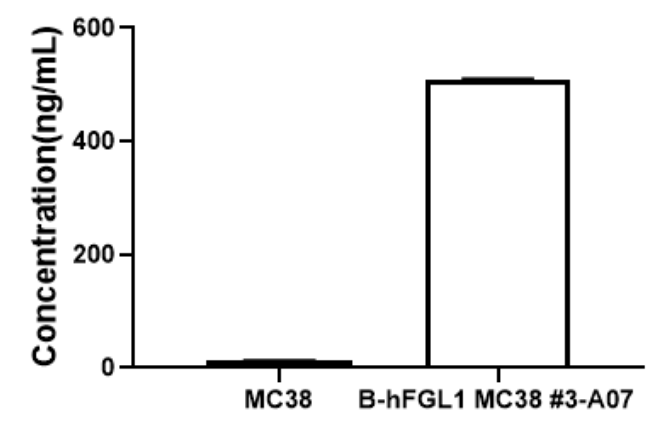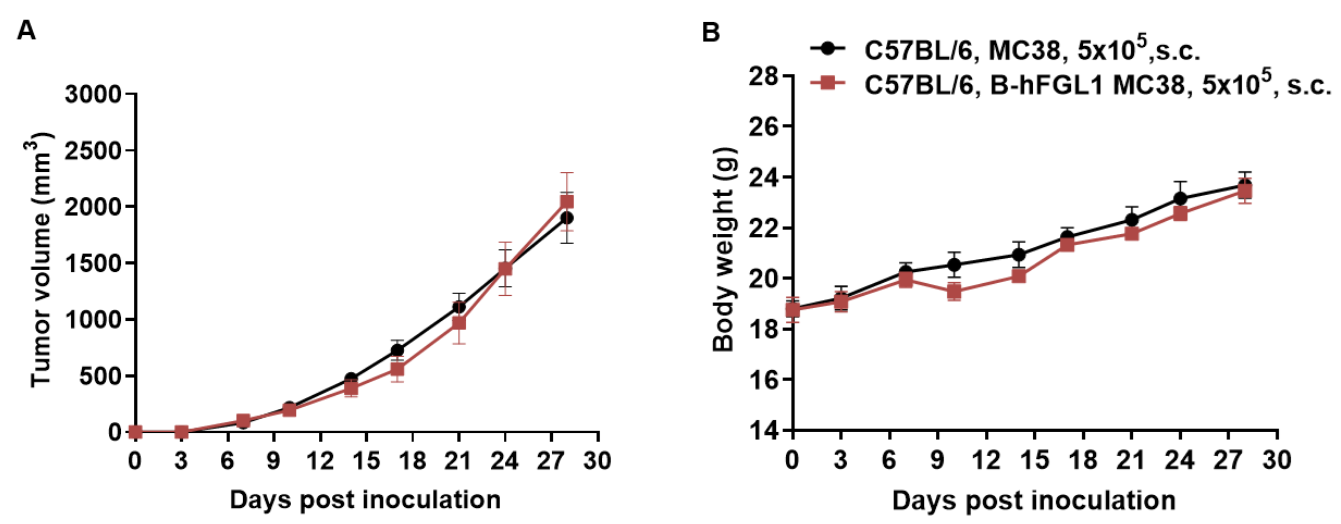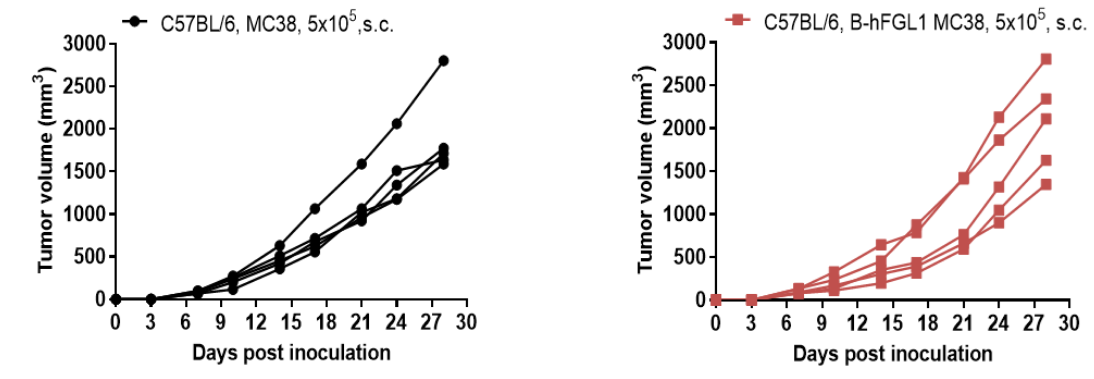


C57BL/6-F9tm1(F9)Bcgen/Bcgen • 112829
| Product name | B-hFIX mice |
|---|---|
| Catalog number | 112829 |
| Strain name | C57BL/6-F9tm1(F9)Bcgen/Bcgen |
| Strain background | C57BL/6 |
| NCBI gene ID | 2158 (Human) |
| Aliases | F9 p22, FIX, HEMB, P19, PTC, THPH8 |
| Application | B-hFGL1 MC38 cells have the capability to establish tumors in vivo and can be used for efficacy studies. |
The mouse Fgl1 gene was replaced by human FGL1 coding sequence in B-hFGL1 MC38 cells. Human FGL1 is highly expressed and secreted by B-hFGL1 MC38 cells.
Gene targeting strategy for B-hFGL1 MC38 cells. The exogenous promoter and human FGL1 coding sequence were inserted to replace part of murine exon 4 and all of exons 5-7. The insertion disrupts the endogenous murine Fgl1 gene, resulting in a non-functional transcript.

FGL1 expression analysis in B-hFGL1 MC38 cells by ELISA. Supernatant from wild-type MC38 and B-hFGL1 MC38 cultures were stained with species-specific anti-FGL1 antibody. Human FGL1 was detectable in the supernatant of B-hFGL1 MC38 cells, but not in the supernatant of wild-type MC38 cells. The 3-A07 clone of B-hFGL1 MC38 cells was used for in vivo experiments.

Subcutaneous homograft tumor growth of B-hFGL1 MC38 cells. B-hFGL1 MC38 cells (5x105) and wild-type MC38 cells (5x105) were subcutaneously implanted into C57BL/6N mice (female, 8-week-old, n=6). Tumor volume and body weight were measured twice a week. (A) Average tumor volume ± SEM. (B) Body weight (Mean± SEM). Volume was expressed in mm3 using the formula: V=0.5 X long diameter X short diameter2. As shown in panel A, B-hFGL1 MC38 cells were able to establish tumors in vivo and can be used for efficacy studies.

B-hFGL1 MC38 tumor growth of individual mice. B-hFGL1 MC38 cells (5x105) and wild-type MC38 cells (5x105) were subcutaneously implanted into C57BL/6N mice (female, 8-week-old, n=6). As shown in panel, B-hFGL1 MC38 cells were able to establish tumors in vivo and can be used for efficacy studies.